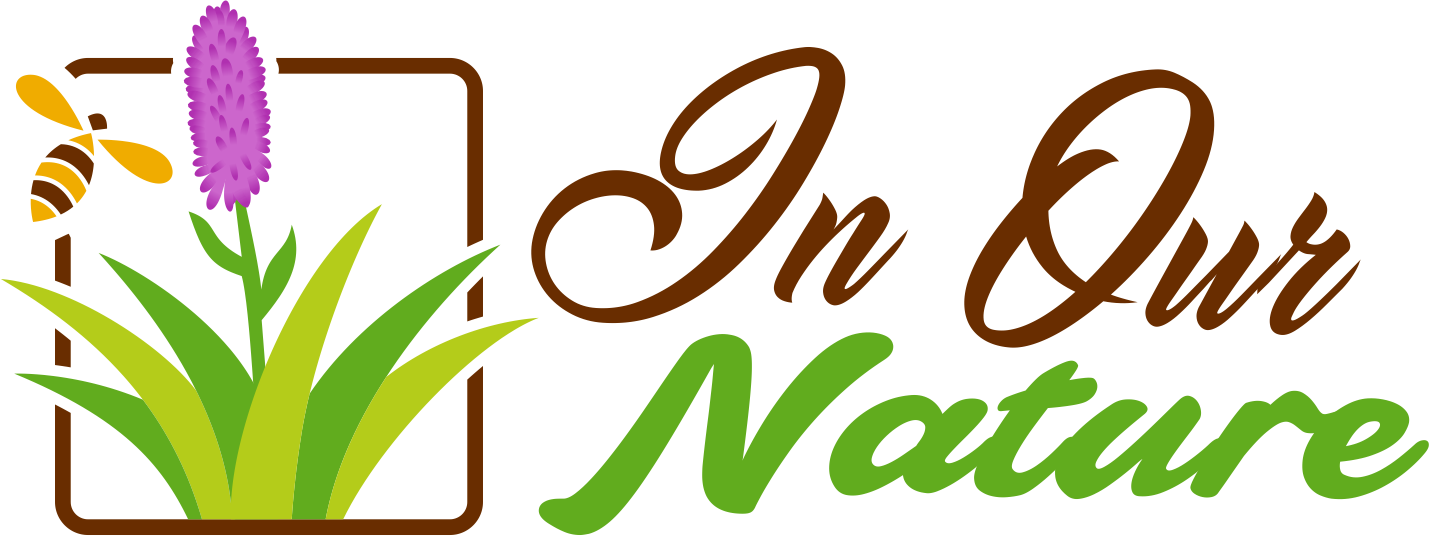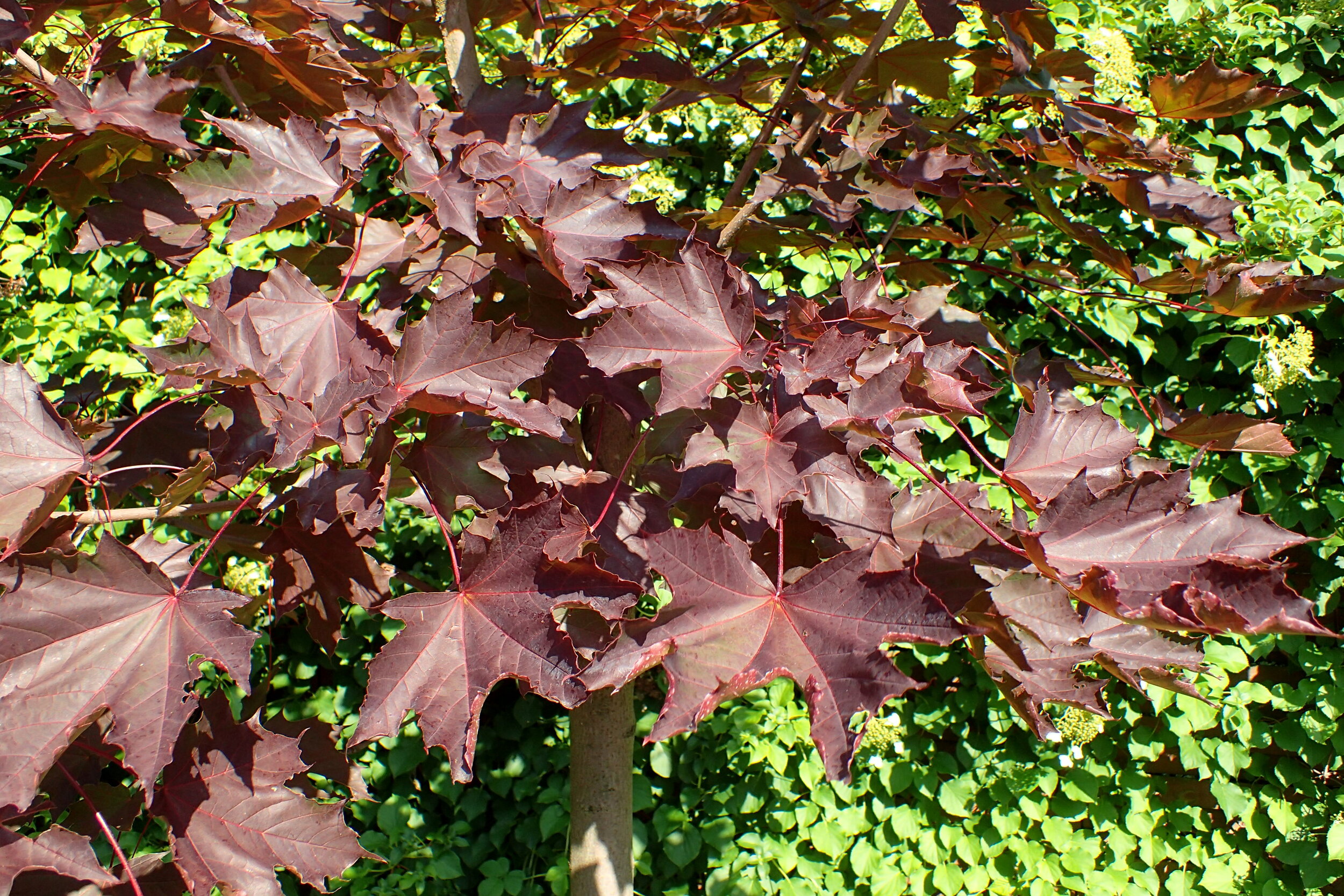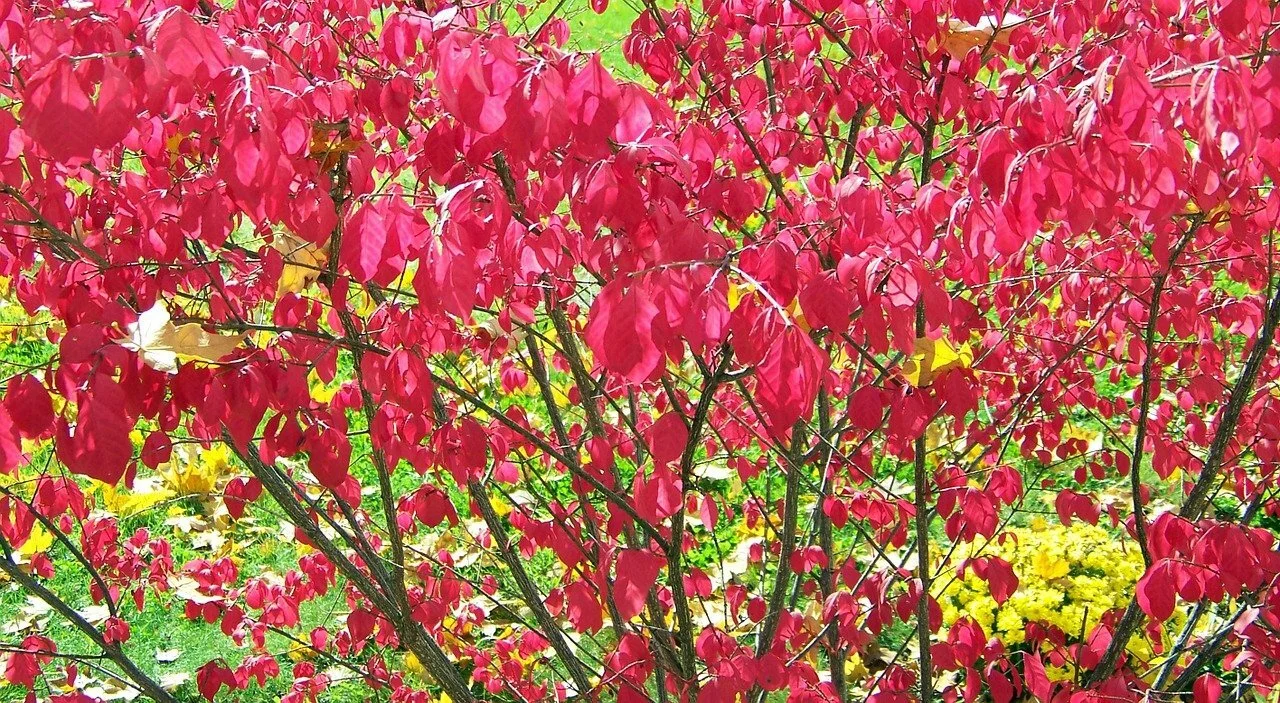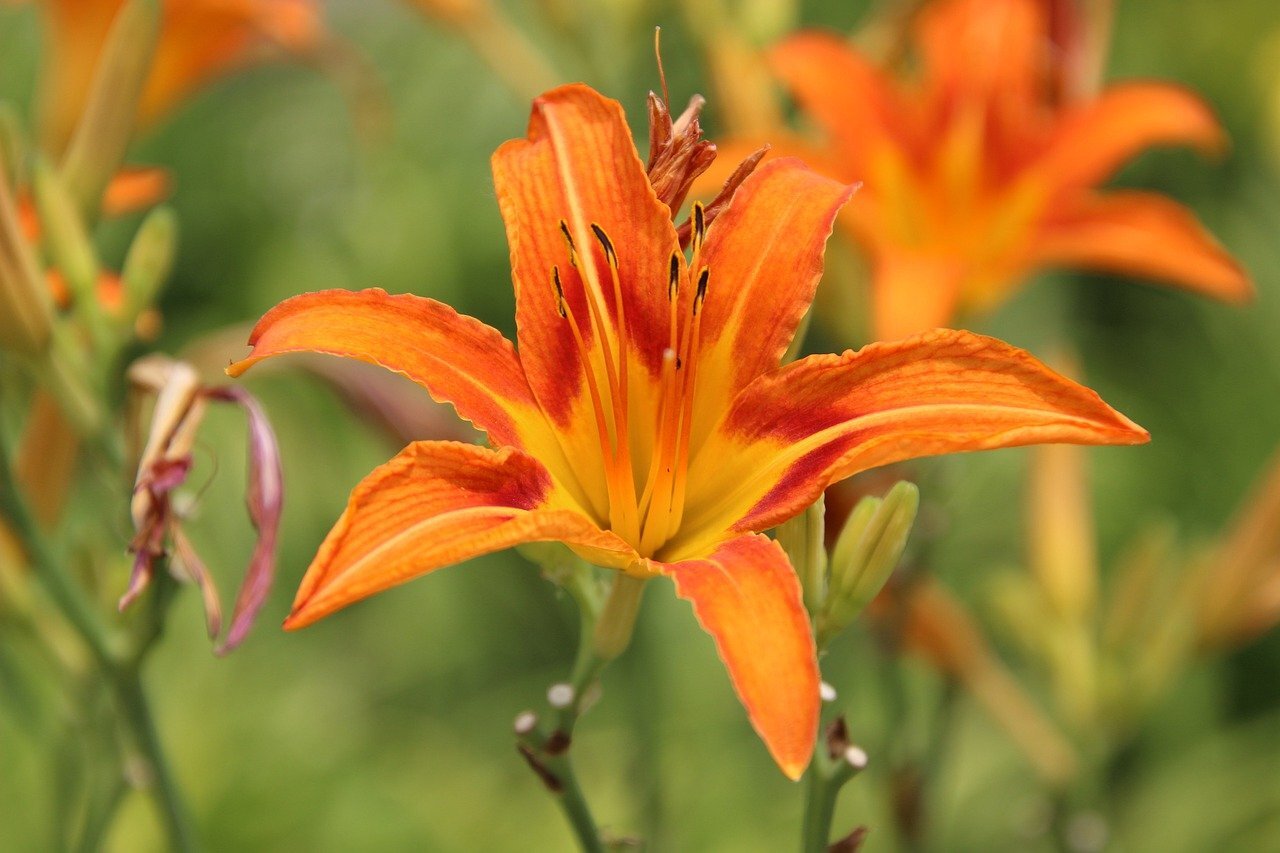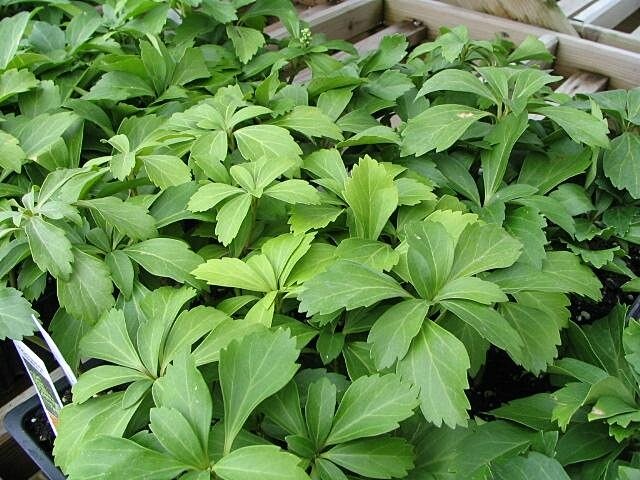Native Alternatives to Invasive Plants
Invasive species are the second biggest threat to biodiversity loss (after habitat destruction), yet so many of them are grown on purpose in gardens.
Only YOU can prevent the spread of invasive garden plants
Invasive plants are defined as non-native plants whose introduction causes economic or environmental harm. These plants often reproduce rapidly, adapt to a variety of growing conditions and form dense monocultures that push out all, or most, native flora and fauna. Note that native plants, by this definition, cannot be invasive.
Many invasive plants were introduced to North America through the horticultural trade. A desire to grow exotic plants from all over the world is contributing to an environmental crisis that has become the second biggest factor in the decline of native biodiversity!
Unfortunately, many of these invasive plants are still sold in the nursery trade! Every gardener wants to believe that invasive plants don’t spread from their yards but the reality is that they do - whether they notice it or not! This means that gardeners have a vital role to play in stopping the spread of invasive garden plants.
With so many amazing native plants to choose from in Ontario, there is never a good reason to choose invasive species in a garden.
Table of Contents
I was tempted to name this article “ Native alternatives to ecologically dysfunctional garden plants” because there are so many non-native garden plants that aren’t invasive but have native alternatives that provide so much more value to the beneficial wildlife we share our yards with. That’s why, as you may notice, not every plant on this list is classified as invasive. Those that are officially listed as Invasive in Ontario are noted with an asterisk (*).
In this article we will discuss the problem with each invasive plants, which of its desirable garden traits can be replaced with a native plant and how you can facilitate its removal in your garden. Note that this article contains affiliate links to recommended products that can help with your invasive species removal tasks. Purchasing items through these links helps us to provide the free content on our site.
Norway Maple (Acer platanoides)*
Goutweed (Aegopodium podagraria)*
Bugleweed (Ajuga reptans)*
Japanese Barberry (Berberis thunbergii)*
Butterfly Bush (Buddleia davidii)
Lily of the Valley (Convallaria majalis)*
Burning Bush (Euonymus alatus)*
Forsythia (Forsythia spp.)
English Ivy (Hedera helix)*
Daylily (Hemerocallis fulva)*
Dame's-rocket (Hesperis matronalis)
Yellow Flag Iris (Iris pseudoacorus)*
Russel Hybrid Lupins (Lupinus polyphyllus)
Creeping Jennie (Lysimachia nummularia)*
Miscanthus (Miscanthus spp.)*
Pachysandra (Pachysandra terminalis)*
Common Buckthorn (Rhamnus cathartica)*
False Spirea (Sorbaria sorbifolia)*
Periwinkle (Vinca minor)*
Norway Maple (Acer platanoides)
If we are proud to be Canadian then we should be proud to grow our own trees - not Norways’!
The problem:
Norway Maple is a common urban tree that has a high potential to spread to natural areas due to it’s prolific seed production. It produces deep shade that crowds out native forest-dwelling species and has allelopathic effects (meaning it produces chemicals that slow down the growth of surrounding species). It is not uncommon to see bare soil under Norway Maples due to these two characteristics.
Native solutions:
Norway Maple was introduced for use as a shade tree and it’s ability to tolerate urban conditions (pollution, salt, compaction , etc.). I believe that if we are proud to be Canadian then we should be proud to grow our own trees - not Norways’!
Here are some native shade trees that can tolerate urban conditions and replace your Norway Maple:
Norway Maple removal:
Large trees should be removed by a professional arborist. Smaller trees can be removed by digging with a root spade or by pulling with a brush grabber. Seedlings can be pulled by hand or weed-whacked.
Goutweed (Aegopodium podagraria)
The bane of gardeners everywhere. Goutweed is likely still being sold at a nursery near you.
The problem:
Goutweed is a fast-spreading invasive species and, unfortunately, very common in gardens. Even the most attentive gardeners have trouble controlling Goutweed because each piece of root will eventually lead to a new plant. Goutweed spreads by rhizomes and will completely smother native species in natural areas that border human settlements.
Native solutions:
Goutweed was introduced as a fast-spreading ornamental groundcover. It is valued by gardeners who use the “plant-and-forget” approach because it’s super adaptable and requires no effort to grow. Here are some adaptable native alternatives that thrive on the same neglect that Goutweed does:
Want something that spreads just a fast?
Looking for a similar leaf texture?
Goutweed removal:
Goutweed is notoriously difficult to remove. The smallest piece of root will re-grow in the soil so when digging it up, make sure to get every last root out. A less labour intensive method is to cut the top growth down as low as you can then cover the site with a black or clear plastic tarp and let it bake in the sun for a few months.
Bugleweed (Ajuga reptans)
It’s pretty, but Bugleweed will smother your garden while giving very little back to local wildlife.
The problem:
Bugleweed spreads quickly via stolons and will smother anything in it’s way. It is usually spread unknowingly by gardeners who dump yard waste along natural areas.
Native solutions:
Bugleweed is valued as a dense, low growing groundcover for part sun to shade conditions. It is often used to fill in large areas quickly. Here are some native alternatives that are excellent groundcovers for part sun and shade:
Foamflower (Tiarella cordifolia)
Barren Strawberry Waldsteinia fragarioides
Blue Violet (Viola sororia)
Bugleweed removal:
Bugleweed readily regrows from roots or stems left behind, so dig it up thoroughly with a sturdy garden fork and sift through the soil to make sure no plant material is left behind. Fortunately, the roots are shallow and fairly easy to remove compared to others on this list. Another less labour intensive method is to cover the plant with a black or clear plastic tarp and let it bake in the sun for a few months (at least).
Japanese barberry (Berberis thunbergii)
Dense Japanese Barberry growth can create ideal conditions for ticks to thrive.
The problem:
Japanese Barberry is an adaptable shrub with many thorns along it’s stems. It’s seeds have high germination rates and easily escape into natural areas, especially woodlots. They have the ability to alter soil pH and reduce the leaf litter layer on forest floors, thus dramatically altering native plant habitat. In addition, dense Barberry growth can create ideal conditions for ticks to thrive. Herbivores won’t touch the plant due to its dense, sharp thorns.
Native solutions:
Barberry shrubs are valued in gardens as foundation shrubs with year-round garden interest because the red berries remain on the plant through winter. Here are some native alternatives that provide winter interest and won’t invade natural areas (or poke you as you try to prune them!):
Winterberry (Ilex verticillata)
Ninebark (Physocarpus opulifolius)
Fragrant Sumac (Rhus aromatica)
Snowberry (Symphoricarpos albus)
Purple Flowering Raspberry (Rubus odoratus)
Barberry removal:
Barberry will readily grow back from its root ball, so root removal is key to controlling it. I recommend a high quality root spade which will allow you to easily cut into the earth to get to the root ball of the plant. Seedlings can be managed by hand pulling, long-term tarping or consistent weed-whacking. Barberry has many sharp thorns along its branches, so you may want to consider using thick gloves, safety glasses and arm protectors such as these.
Butterfly bush (Buddleia davidii)
Butterfly Bush attracts butterflies but it does not support their lifecycles. Native plants can do both!
The problem:
I don’t think any garden plant stirs up more controversy than Butterfly Bush! Judging by it’s name you would assume that it’s good for butterflies, right? The problem is that, while being a nectar source for adult butterflies, it doesn’t feed caterpillars of any butterfly species in North America. This means that by Butterfly Bush does very little to support the lifecycle of butterflies because it doesn’t feed their young. Butterfly Bush is also a known invasive species in parts of North America. While not invasive YET in Ontario, a changing climate could mean it’s only a matter of time before it is.
Native solutions:
Butterfly Bush is valued by well-meaning gardeners who want to support butterflies in their yards. However, the name butterfly bush is no more than a clever marketing tactic - it does very little to support the lifecycles of butterflies! Here are some native alternatives that support butterflies AND their caterpillars:
Do you miss the intense purple colour of Butterfly Bush? Try:
Leadplant (Amorpha canescens)
Boxwood pruned into the “green meatballs” that are all too familiar in traditional gardens.
Boxwood (Buxus spp.)
The problem:
Boxwood, (a.k.a the green meatball) while not invasive, is an ecologically dysfunctional plant when grown in North America. It doesn’t host any native caterpillars and the flowers provide minimal (if any) value to pollinators. In reality, it might as well be a plastic plant! The overuse of Boxwoods in our landscapes represents how disconnected from nature our gardens really are. By moving away from these plants we can start to see our gardens as inclusive parts of nature, rather than a suppressive force against it.
Native solutions:
Boxwood is valued as a low-growing, well-behaved hedge that can be pruned to a variety of desirable shapes and sizes. Here are some low growing native shrub alternatives that actually benefit our wildlife. They can all be trimmed to a certain degree however, Snowberry is the best for a Boxwood replacement if you want a formal hedge:
Snowberry (Symphoricarpos albus)
Fragrant Sumac (Rhus aromatica)
St. Johns Wort (Hypericum kalmianum)
Boxwood removal:
Boxwood is simple to remove with a spade or garden fork.
Lily of the Valley (Convallaria majalis)
Lily of the Valley invades forest floors and pushes out native species. This patch was found a couple kilometers away from the nearest garden, proving that it spreads far and wide.
The problem:
Lily of the Valley is a poisonous plant with an aggressive growth habit. It spreads rapidly by rhizomes and, to a lesser extent, seeds. The root system is incredibly dense. In addition, it’s ability to tolerate a wide variety of growing conditions allows it to colonize and smother native forest-floor wildflowers. Many Trilliums, Bloodroot and other spring wildflowers have been lost to Lily of the Valley invasions.
Native solutions:
Lily of the Valley is valued in gardens as a spring-blooming groundcover that grows and spreads well in the shade of trees. Here are some native alternatives that will grow well under trees and add some much-need spring blooms to your garden:
Solomons Seal (Maianthemum stellatum)
Lily of the Valley removal:
The dense, but shallow, roots of lily of the valley are tough to dig up so I recommend a sturdy garden fork or spade. Covering the site with a clear or black plastic tarp is an effective method as the vegetation and roots will be baked by the heat of the sun. Make sure to choose a tarp that extends a few feet wider than the patch you’re trying to kill as it can spread underground and escape from the tarp.
Burning Bush (Euonymus alatus)
Burning Bush - Our ecosystems would be much healthier if we sent Burning Bush to the burn pile.
The problem:
Burning Bush is a prolific seed producer that easily escapes cultivation. It threatens a variety of native habitats where it outcompetes native woody species and can form monocultures on forest floors. This severe reduction in biodiversity is a serious threat to the survival of local wildlife.
Native solutions:
Burning Bush is prized for it’s intense fall colour and winter interest. Beside that, it’s a fairly boring shrub. Here are some native alternatives that meet and exceed the valuable traits of Burning Bush.
Eastern Wahoo (Euonymus atropurpureus) - a native burning bush!!
Blueberry (Vaccinium spp.)
Fragrant Sumac (Rhus aromatica)
Chokeberry (Aronia melanocarpa)
Winterberry (Ilex verticillata)
Gray Dogwood (Cornus racemosa)
Burning bush removal:
Burning bush is best removed root ball and all. Mature shrubs will be firmly rooted so you will want to consider a root spade such as this one. Don’t bother only cutting it back because it will readily re-grow. Small seedlings can be hand-pulled.
Forsythia (Forsythia spp.)
The problem:
While not invasive, Forsythia is an ecologically dysfunctional plant and provides little value to wildlife. You will notice many flowers on the plant but very few, if any, pollinators visiting it. This is a problem, especially in springtime when pollinators need an abundance of nectar and pollen more than ever. Sometime Forsythia can escape to natural areas that border human settlements.
Native solutions:
Forsythia is valued for it’s showy display of yellow flowers in the spring. Here are some native alternatives that provide spring blooms that pollinators will actually benefit from:
Spicebush (Lindera benzoin) - very similar flowers and bloom time!
Serviceberry (Amelanchier spp.)
Pussy Willow (Salix discolor)
Chokecherry (Aronia melanocarpa)
Redbud (Cercis canadensis)
English Ivy (Hedera helix)
English Ivy is a woody vine with uncontrollable growth habits.
The problem:
English Ivy was introduced to North America as an ornamental vine but has since escaped cultivation. It is most often found near human habitations where it’s aggressive growth habit readily smothers native trees and wildflowers.
Native solutions:
English Ivy is most often used as an ornamental groundcover or vine that thrives in part sun to shade. Here are some vine and groundcover alternatives:
As a vine:
American Bittersweet (Celastrus scandens)
Virginia Creeper (Parthenocissus quinquefolia)
Wild Grape (Vitis spp.)
As a groundcover:
Daylily (Hemerocallis fulva)
The beloved Daylily is often nicknamed “Ditch Lily” for it’s demonstrated ability to grow anywhere and everywhere!
The problem:
Daylily has recently been classified as an invasive species. This is a long overdue classification because Daylily is aggressive and adaptable plant that easily out-competes native species. The dense root systems leave no space for other plants and grow back from small pieces left behind in the soil.
Native solutions:
Daylilies are valued for being really easy to grow and having showy flowers. Here are native alternatives with showy flowers that require little care to thrive:
Michigan Lily (Lilium michiganense) - a native lily!
Ohio Spiderwort (Tradescantia ohiensis)
Dame's-rocket (Hesperis matronalis)
Enjoy the attractive purple colour of Dames Rocket in your yard with similar native species that will actually benefit the environment.
The problem:
Dames rocket was introduced to North America by European settlers for its use as an ornamental garden plant. Since then, it’s prolific seed production has allowed it to colonize a variety of natural areas such as meadows, roadsides and disturbed areas. Once it takes hold in an area, it excludes native species by forming dense monocultures.
Native solutions:
Dames Rocket is valued by gardeners for its ease of growth and showy purple to pink flowers. Here are some easy to grow native plants that are easy to grow in similar conditions but won’t cause harm to our natural areas if they spread:
Yellow flag (Iris pseudacorus)
Protect Ontario’s sensitive wetlands by saying no to Yellow Flag Iris
The problem:
Yellow Flag was introduced as a plant for pond gardens and wet areas. It has since escaped to wetlands where it quickly forms dense stands. The aggressive root system outcompetes and displaces native wetland plant species while reducing food sources for fish and birds.
Southern Ontario has lost over 72% of its original pre-settlement wetlands so protecting these critical habitats from invasive species has never been more important!
Native solutions:
Yellow Flag is valued for it’s showy yellow flowers, lance-like foliage and it’s ability to thrive in wet areas and pond gardens. Here are some native alternatives with similar traits:
Blue Flag Iris (Iris versicolor) - a native Iris with blue/purple flowers!!
Marsh Marigold (Caltha palustris)
Sweet Flag (Acorus americanus)
Canada lily (Lilium canadense)
Russel Hybrid Lupins (Lupinus polyphyllus)
Most Lupins sold at nurseries are non-native species and don’t feed caterpillars of the Karner Blue butterfly.
The problem:
Russel Hybrid Lupins are the Lupines that you most commonly see in gardens around Ontario. While not officially invasive, they have naturalized across Ontario. If you have seen Lupins growing along the side of the road, it’s most likely the Russel Hybrid. So, what’s the problem with them if they are not invasive?
Have you ever heard of the beautiful Karner Blue butterfly? Her caterpillars can ONLY eat the leaves of the NATIVE Sundail Lupine. Unfortunately, most lupins sold in nurseries are non-native Russel hybrids which her caterpillars can't eat. They are beautiful but they often hybridize with Sundail Lupines, making them inedible to Karner Blue caterpillars. This, plus habitat loss, is why we no longer see these stunning butterflies in Ontario.
Native solutions:
First and foremost, I want to suggest our native Sundial Lupine (lupinus perennis) as an ecologically friendly alternative to the Russel Hybrid. They thrive in the driest, most nutrient poor soils you can find and they feed Karner Blue caterpillars. Planting Sundail Lupin in your garden won’t bring back the Karner Blue butterfly on it’s own, but it does teach an important lesson about the relationship between native plants and the wildlife that depend on them.
If your yard doesn’t have suitable growing conditions for Sundail Lupin then consider the following to replace the Russel Hybrids:
Canada Milk Vetch (Astragalus canadensis)
Creeping Jennie (Lysimachia nummularia)
Need an alternative to Creeping Jennie? There is a native groundcover for that!
The problem:
Creeping Jenny is a very common garden plant with vigorous growth habits. It’s shade tolerance and evergreen characteristics give it an advantage over native wildflowers like trilliums who go dormant in mid-summer. This plant is often found in natural areas, like forests, near human settlement where gardeners unknowingly spread it.
Native solutions:
Creeping Jenny is valued in gardens as a low-growing, flowering groundcover for moist, shady soils. It’s a true “plant-and-forget” option for gardeners. However, there are native alternatives with equal beauty that are just as easy to grow:
Barren Strawberry (Waldsteinia fragarioides)
Foamflower (Tiarella cordifolia)
Partridgeberry (Mitchella repens)
Woodland Phlox (Phlox divartica)
Miscanthus (Miscanthus spp.)
Miscanthus is easily replaced by ecologically beneficial native grasses.
The problem:
Miscanthus grasses spread aggressively by roots and, to a lesser extent seed, to form dense monocultures. This cause a severe decrease in biodiversity as very few plants can grow alongside Miscanthus. Large stands of dry plants also create firehazards. It is easily spread by gardeners who unknowingly move pieces of roots. The attractive seed heads are used in dried arrangements which further helps the spread of this invasive species. Fortunately, some, not all, cultivars are infertile and won’t spread by seeds.
Native solutions:
Miscanthus grasses where introduced to North America as ornamental grasses. They are valued for fast growth, adaptability and attractive, fluffy seed heads. Fortunately, we have many native grasses with similar characteristics:
Pachysandra (Pachysandra terminalis)
Pachysandra does not play well with other plants - or native ecosystems!
The problem:
Pachysandra is a rampant groundcover often used in shade gardens. It can regenerate from the smallest piece of root, making it especially easy to spread (and hard to get rid of!) through normal gardening activities. Pachysandra most often escapes into forested areas that back onto human settlements.
Native solutions:
Pachysandra is valued for it’s vigorous growth, dense habit and lush leaves. If you want similar traits in a native plant then consider the following:
Bulblet Fern (Cystopteris bulbifera)
Largeleaf Aster (Eurybia macrophylla)
Barren Strawberry (Waldsteinia fragarioides)
Virginia Waterleaf (Hydrophyllum virginianum)
Wild Ginger (Asarum canadense)
Common buckthorn (Rhamnus cathartica)
Studies show that birds prefer the berries of native shrubs over invasive shrubs like Buckthorn.
The problem:
Common buckthorn is one of the most common and destructive invasive shrubs in Ontario. In the spring, it is the first shrub to leaf-out and the last to drop it’s leaves in the fall, giving it a superior advantage over native species. This not only results in monocultures of Buckthorn, but also in an increase of nitrogen in the soil which can hurt native species who have not adapted to nitrogen rich soils. This process improves growing conditions for Buckthorn while further opening up an ecosystem to invasion from other invasive species.
Native solutions:
Thankfully, Buckthorn is not sold in any nurseries that I am aware of. However, I do know that many unsuspecting gardeners have Buckthorn show up in their gardens, decide they like the look and proceed to take care of it (I have even seen Buckthorns neatly pruned into decorative hedges!). Here are some native alternatives that will help wildlife thrive:
Chokecherry (Prunus virginiana)
Alternate-Leaf Dogwood (Cornus alternifolia)
Serviceberry (Amelanchier canadensis)
Ninebark (Physocarpus opulifolius)
Spicebush (Lindera benzoin)
Buckthorn removal:
Removal of the root ball is the most effective way to control mature Buckthorn shrubs. The easiest tools for this are brush grabbers and weed wrenches. As for the seedlings, the are best controlled by hand pulling or constant weed-whacking.
False Spirea (Sorbaria sorbifolia)
False Spirea will take over your yard, and native ecosystems, if you let it.
The problem:
False Spirea is a rampant shrub that sends up suckers like nothing else, even in shade. Even the most attentive gardeners will battle to keep it under control! Due to this, it can often be seen taking over forest edges or meadows near human settlement.
Native solutions:
False Spirea is valued because it’s so easy to grow and has showy white flowers. Easy to grow native shrubs with showy flowers include:
Meadowsweet (Spirea alba)
Staghorn Sumac (Rhus typhina)
Nannyberry (Viburnum lentago)
Elderberry (Sambucus canadensis)
Black Cohosh (Actaea racemosa)
Periwinkle (Vinca minor)
Periwinkle, admittingly, is a beautiful plant. However, as gardeners we must ask ourselves if aesthetic preferences are more important than ecological function. In our opinion, they aren’t!
The problem:
Periwinkle is one of the most common invasive garden plants on this list. It spreads rapidly by stems that root where they touch the ground. This characteristic allows Periwinkle to form a dense mat of foliage that smothers out native plants. The flowers are almost useless to pollinators.
Native solutions:
Periwinkle is valued as a tough, low-growing groundcover that adapts to a variety of conditions. Some gardeners grow it for it’s evergreen foliage. We can address all of these traits with native plant alternatives:
Woodland Phlox (Phlox divaricata)
Silverweed (Argentina anserina)
Partridgeberry (Mitchella repens)
Barren Strawberry (Waldsteinia fragarioides)
Periwinkle removal:
Periwinkle is notoriously hard to remove. The best method is digging up the fibrous roots by using a sturdy garden fork. Make sure to sift through the soil thoroughly to remove every root and stem or else it will grow back! Flame weeding can also be effective on Periwinkle although it may take multiple attempts (3+) to prove effective.
Other Popular Articles:
References
https://cvc.ca/wp-content/uploads/2011/07/11-150-priorityinvasives-11-list-web.pdf
https://www.ontarioinvasiveplants.ca/wp-content/uploads/2020/04/Southern-Grow-Me-Instead-1.pdf
https://www.ontarioinvasiveplants.ca/resources/best-management-practices/
